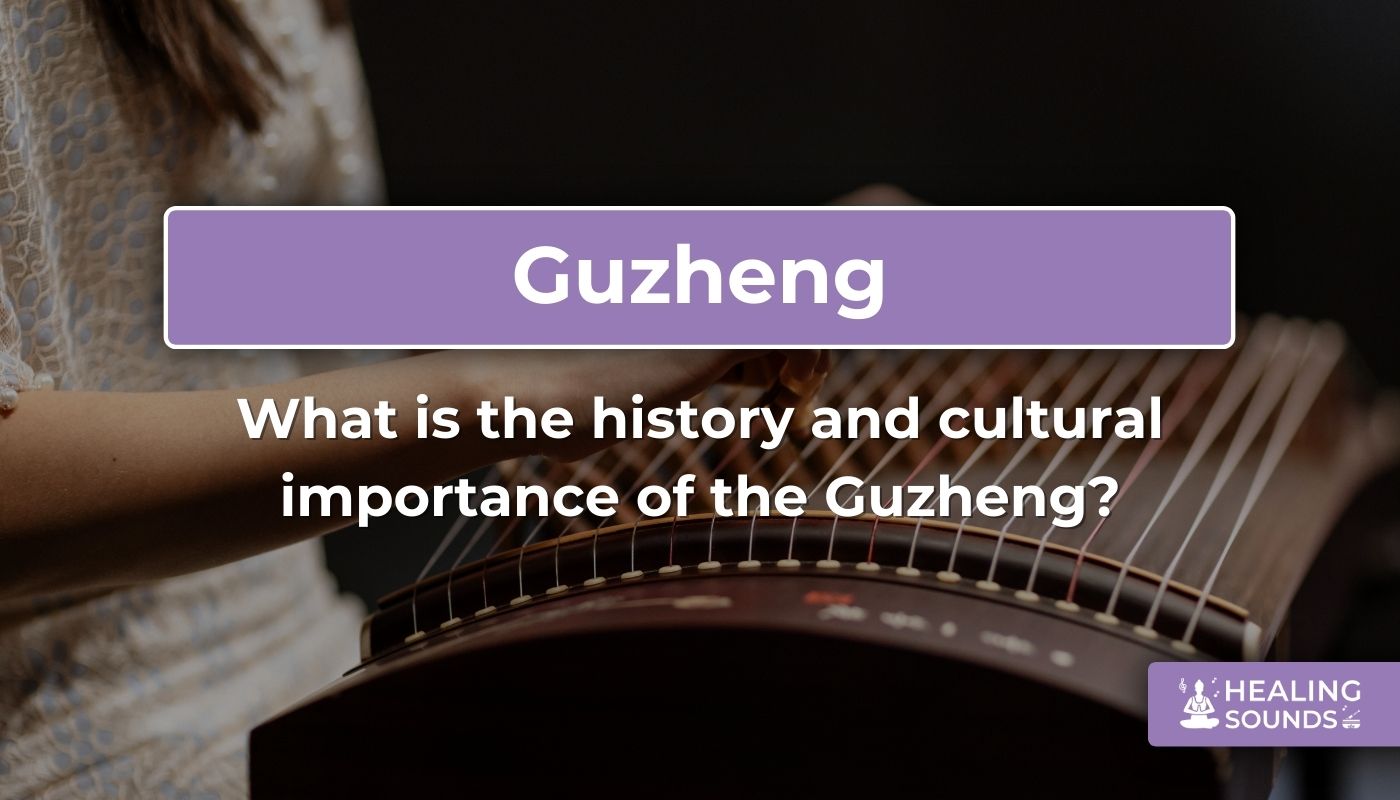For centuries, the Guzheng instrument has resonated as one of the most cherished musical voices in Chinese culture. As a traditional Chinese zither, the Guzheng embodies elegance and refinement, offering not only a soothing auditory experience but also profound cultural significance. Its evocative sounds have journeyed through generations, weaving tales of ancient traditions, spirituality, and even healing. Today, this timeless instrument continues to inspire musicians worldwide and finds a place in modern wellness practices like mindfulness. If you're a music enthusiast or cultural explorer keen to understand its rich history of the Guzheng and enduring impact, join us on this fascinating journey.
Tracing the Ancient Roots: The History of the Guzheng Instrument
The story of the Guzheng instrument begins over 2,500 years ago, tracing its origins back to the Qin Dynasty (221–206 BC) in ancient China. Early iterations of this zither were simpler, often featuring fewer strings – perhaps just five initially. Over centuries, the instrument evolved, with the number of strings gradually increasing to the twenty-one strings commonly seen on modern Guzhengs.
This evolution wasn't merely cosmetic; it mirrored the growing complexity and artistic expression demanded by musicians across successive dynasties. The history of the Guzheng is marked by periods of significant development, reflecting the dynamic cultural landscape of China.
When was the Guzheng invented?
While precise dates are debated among historians, the Guzheng's predecessors emerged during the Warring States period (475–221 BC), with the instrument gaining prominence during the Qin Dynasty. It's considered one of the foundational instruments in the rich tapestry of Chinese musical instruments.
The Golden Age: Tang Dynasty Transformations
The Tang Dynasty (618–907 AD) is often considered a golden age for the Guzheng. During this era, the instrument underwent significant transformations in both construction and performance techniques. Artisans honed their craft, utilising higher quality woods like Paulownia (wu-tong) to enhance resonance and tonal richness. Performers, in turn, developed sophisticated finger techniques – including intricate plucking patterns, glissandi (hua yin), and vibrato – that greatly expanded the instrument's expressive capabilities.

21-String Portable Guzheng Chinese Zither 古筝 Instrument
$399.90 $519.90
Experience the Guzheng's rich history firsthand with this portable model, blending traditional craftsmanship with modern convenience for learners and players on the go.
Explore This GuzhengA Symbol of Culture: The Role of the Guzheng in Chinese Society
The Guzheng is far more than just wood and strings; it holds a revered place in Chinese culture, imbued with deep symbolic meaning. What is the cultural significance of the Guzheng? Historically, it was associated with scholars, poets, courtly life, and refined elegance. Playing the Guzheng was seen as an act cultivating virtue and intellectual grace.
During the Han Dynasty (206 BC–220 AD), the melodious strains of the Guzheng often filled royal courts and accompanied banquets, poetry recitals, and dances. Its music was perceived as capable of expressing the full spectrum of human emotion, painting auditory landscapes, evoking the changing seasons, and reflecting philosophical ideals found in Taoism and Confucianism.
The instrument became a powerful medium for storytelling and preserving cultural memory. Musicians composed pieces depicting historical legends, celebrating nature's beauty, or conveying moral tales, making Guzheng music an integral part of China's intangible cultural heritage.
The Art of Construction: Crafting the Guzheng Sound
The distinctive sound of the Guzheng instrument owes much to its meticulous construction. The body, typically a long, resonant wooden box, is traditionally crafted from Paulownia wood, chosen for its lightweight yet resonant acoustic properties. The selection and treatment of the wood are critical for the instrument's tonal quality and sustain.
Over this hollow body stretch the strings. While ancient strings were made of silk, yielding a softer, more muted tone, modern Guzhengs predominantly use metal strings (often steel wrapped in nylon). This transition allows for greater volume, brighter timbre, and increased durability, catering to contemporary performance contexts.
- Body: Usually Paulownia wood for optimal resonance.
- Strings: Typically 21 steel strings nowadays, offering brightness and volume.
- Movable Bridges (Zhu): Individual bridges for each string, allowing for precise tuning and pitch bending essential to Guzheng music techniques.
Beneath each string sits a movable bridge (known as 'zhu' or 'ma'). These bridges are fundamental to the Guzheng's versatility. By shifting their positions, players can fine-tune each string and easily change keys or modes, enabling the rich microtonal inflections characteristic of traditional Chinese music.
Mastering the Strings: The Evolution of Playing Techniques
Playing the Guzheng is an art demanding dexterity, sensitivity, and control over a wide range of hand techniques. Right-hand techniques typically involve plucking patterns using fingerpicks, creating melodies and rhythmic accompaniment. The left hand focuses on pressing down on the strings to the left of the bridges, altering pitch to create vibrato, slides, and other expressive embellishments.
Over centuries, distinct regional schools of Guzheng playing emerged, each with its unique stylistic nuances:
- Shandong and Henan Schools: Known for their vigorous, resonant styles.
- Zhejiang School: Characterized by its delicate, lyrical expression.
- Chaozhou School: Famous for its intricate ornamentation and unique modes.
These diverse techniques contribute significantly to the instrument's versatility, allowing it to convey a vast range of moods, from tranquil meditation to dramatic intensity. Exploring different playing styles reveals the depth and adaptability embedded within the history of the Guzheng.
Explore Portable Guzheng Options

70 cm Portable Guzheng 21 Strings Chinese Zither 古筝
$529.90
$689.90
Compact 70cm size, perfect for learners seeking portability without compromising the traditional Guzheng sound and feel. Learn more ➔

82 cm Guzheng 21 Strings Paulownia Chinese Zither 古筝
$479.90
$619.90
Beautifully crafted from resonant Paulownia wood, this 82cm Guzheng offers a rich tone ideal for exploring traditional Chinese music. Learn more ➔
Harmony and Healing: Symbolism and Spirituality
The cultural significance of the Guzheng extends deeply into spiritual and philosophical realms. In traditional Chinese thought, music is seen as a way to harmonize the self with the cosmos. The Guzheng’s sound, often described as flowing like water or whispering like wind, is believed to facilitate the balance of qi (vital life energy) within the body.
Its gentle, resonant tones are conducive to contemplation and meditation. Many find that listening to or playing the Guzheng helps reduce stress, calm the mind, and foster a sense of inner peace. This therapeutic quality is why the Guzheng remains relevant in modern sound healing and mindfulness practices, offering a sonic pathway to tranquility. Explore more about the broader context of Chinese music history to understand its philosophical underpinnings.
The Guzheng in the Modern World
Far from being confined to history, the Guzheng instrument continues to thrive and adapt in the 21st century. Contemporary musicians are exploring its potential in diverse musical contexts, integrating it into orchestral works, film scores, jazz ensembles, and even electronic music collaborations.
Globalization has introduced the Guzheng to new audiences worldwide, fostering cross-cultural musical dialogues. Artists blend traditional melodies and techniques with modern genres, ensuring the instrument remains a living, evolving tradition. Its unique timbre and expressive power continue to captivate listeners, securing its place in the global soundscape.
Conclusion: Celebrating the Enduring Legacy of the Guzheng
In essence, the Guzheng instrument is a profound cultural artifact, a vessel carrying centuries of history, artistry, and spiritual meaning. From its ancient origins as a Chinese zither in the Qin Dynasty to its vibrant presence on the global stage today, the Guzheng embodies resilience, beauty, and the enduring power of music.
The deep cultural significance of the Guzheng lies not only in its past but in its ongoing ability to connect us to tradition, evoke emotion, and promote well-being. At Healing Sounds, we are passionate about sharing the enchanting world of the Guzheng, offering quality instruments that honour its rich legacy while embracing its future possibilities.
Frequently Asked Questions about the Guzheng Instrument
The Guzheng holds significant cultural importance in China, symbolizing refinement, intellectual grace, and virtue. Historically associated with scholars and courtly life, its music was used for storytelling, expressing philosophical ideals, and accompanying important events. It's also linked to spiritual harmony and the balancing of qi (life energy).
The Guzheng belongs to the 'zheng' family of Chinese zithers. Its history dates back over 2,500 years, originating in the Warring States period and gaining prominence during the Qin Dynasty. Initially having fewer strings, it evolved over centuries, particularly during the Tang Dynasty, to its common 21-string form today, reflecting advancements in musical complexity and craftsmanship.
A Guzheng instrument possesses a wide range of musical colors from flowing musical phrases to ethereal tones. It is capable of producing an extensive range of sounds, from gentle, flowing melodies to strong, resonant chords. Key techniques include plucking (right hand) and pressing/sliding (left hand) to create vibrato, pitch bends, glissandi, and harmonics. Its expressive potential allows it to mimic natural sounds like flowing water or evoke deep emotions.
The suona is another traditional Chinese instrument, a double-reed horn known for its loud, piercing sound. Its history is distinct from the Guzheng, believed to have originated from Central Asia and introduced to China around the 3rd century AD. It's commonly used in folk music, weddings, and outdoor festivities.
While exact invention dates are hard to pinpoint for ancient instruments, predecessors of the Guzheng emerged during the Warring States period (475–221 BC). The instrument gained notable prominence and development during the Qin Dynasty (221–206 BC), making it well over 2,000 years old.

